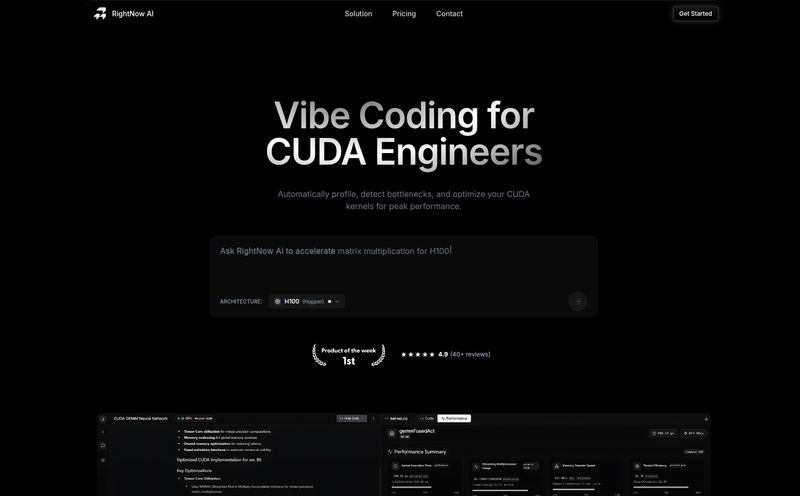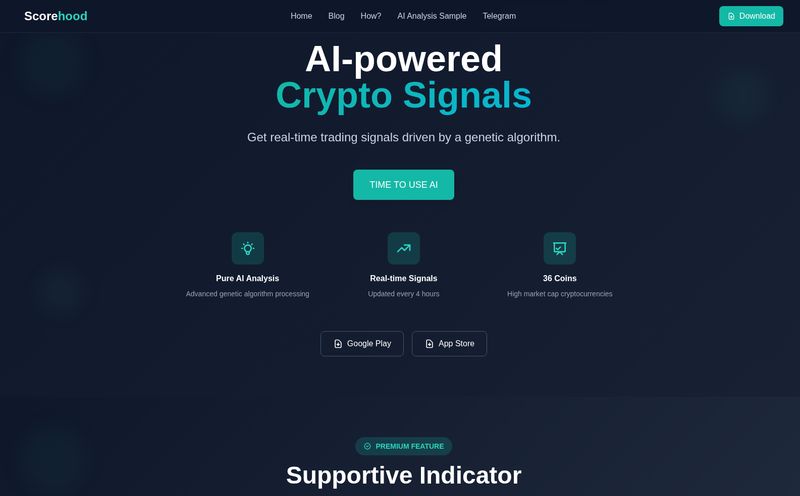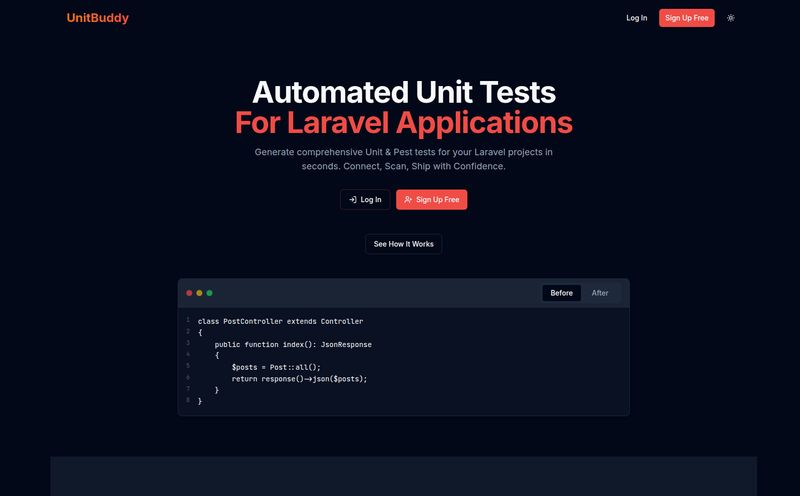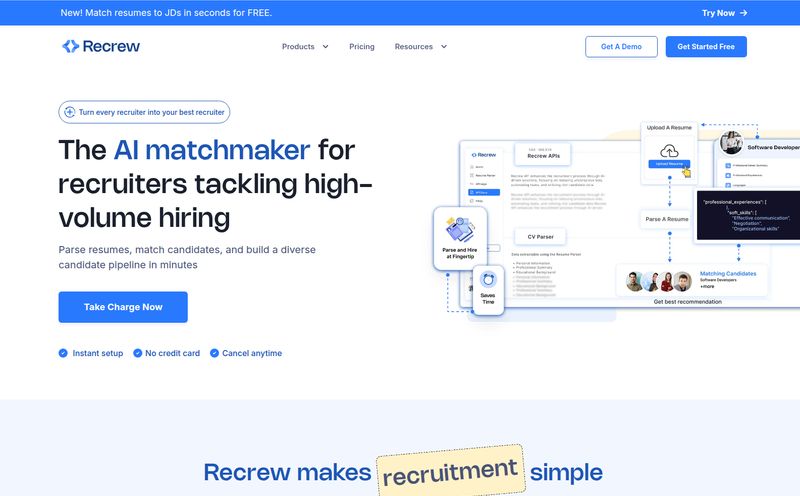If you've ever managed a digital asset library of any significant size, you've felt the pain. It starts small—a few hundred product photos, maybe some user-generated content. Before you know it, you're drowning in a sea of JPEGs and PNGs, all named something like `IMG_4072.jpg`. Finding anything is a nightmare. Tagging them manually? A soul-crushing task you wouldn't wish on your worst enemy.
For years, we've been told that AI would solve this. And for years, the solutions felt... clunky. Inaccurate. Expensive. But the tech has been quietly getting really good. I've been keeping my eye on the space, and one name that keeps popping up is Imagga. They're not exactly new kids on the block, but they've built a suite of tools that feels mature and, frankly, incredibly powerful. So, is it just another overhyped API, or is it the real deal? Let's get into it.
So, What is Imagga, Really?
At its heart, Imagga is an Image Recognition API. Think of it like a set of building blocks for developers. It gives your application the power to 'see' and understand what's in an image. It's not a standalone piece of software you download; it's a service you plug into your own app, website, or internal system. It’s like hiring a team of hyper-fast, impossibly accurate librarians to organize your entire visual library in milliseconds. These librarians can tell you if a photo has a cat, a beach, a car, or even if it's unsafe for work.
They offer this both in the cloud (you send them an image, they send you back the data) and on-premise, which is a huge deal for enterprise clients with strict data privacy policies. We're talking about serious, customizable machine learning technology here.
The Core Features That Actually Matter
An API can have a million endpoints, but only a few really move the needle. Here’s the stuff in Imagga’s toolkit that genuinely got my attention.
Automatic Image Tagging and Categorization
This is the bread and butter. You give Imagga an image, and it returns a list of relevant tags. I uploaded a picture of my golden retriever at the park, and it came back with tags like 'dog', 'animal', 'golden retriever', 'grass', 'pet', 'park', and 'outdoor'. It’s spooky accurate. For an e-commerce store, this is a game-changer. A picture of a model on the beach could be automatically tagged with 'dress', 'blue', 'summer fashion', 'woman', 'beach', 'sand', and 'ocean'. This automates the grunt work of SEO and product categorization, saving hundreds of hours.
Visual Search: The Future of Discovery
Okay, this is where it gets cool. We've all used it on Pinterest or Google. You see a chair you like in a photo and click a button to "find similar items." That's visual search. Imagga lets you build that capability right into your own platform. Imagine a user on your furniture site uploading a photo from a magazine and your site instantly showing them your three closest matches. That’s not just a neat party trick; it’s a powerful conversion tool. It moves beyond text-based searching and into the intuitive way humans actually discover things.
Content Moderation for a Safer Internet
If you handle any kind of user-generated content, you know the dread of waking up to find your platform spammed with inappropriate images. Imagga's content moderation API acts as a first line of defense, automatically flagging or removing adult, violent, or otherwise unwanted content. It can analyze images for NSFW (Not Safe For Work) content, giving you a score so you can decide your own threshold for what to allow. It's an essential tool for maintaining a safe and professional community.
Beyond the Basics: OCR, Cropping, and Colors
Imagga also has a few other specialized tools in its belt. Its OCR (Optical Character Recognition) can read text from within images, which is great for scanning documents or pulling text from social media graphics. The smart cropping feature is another neat one; it identifies the most interesting part of an image and creates a perfectly framed thumbnail automatically. No more decapitated heads in your blog post previews! It can even extract the dominant colors from an image, which could be used to build a 'shop by color' feature or ensure brand consistency.
Building Your Own AI with Custom Training
This, for me, is the crown jewel. While the pre-trained models are great for general-purpose tasks (identifying cats, dogs, cars), what if you need to identify something specific to your business? Like, say, different models of your company's sneakers, or distinguishing between 'chipped' and 'scratched' products on an assembly line.
With Imagga's custom training, you can teach the AI. You feed it your own labeled images, and it builds a custom classification model tailored precisely to your needs. This is where you go from using a generic tool to building a genuine competitive advantage. You're no longer just using an AI; you're shaping one. It requires a bit more effort, obviously, but the payoff can be massive. This is what separates the professional-grade platforms from the simpler, one-size-fits-all tools.
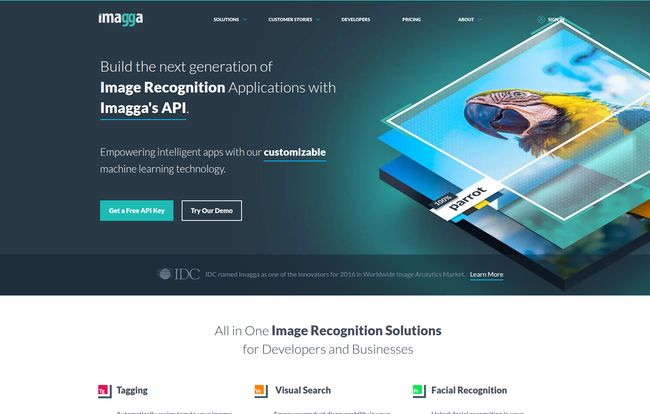
Visit Imagga
Let's Talk Money: A Breakdown of Imagga's Pricing
Alright, the all-important question: what's this going to cost? Imagga's pricing is based on a subscription model tied to the number of API calls you make per month. It's pretty straightforward, which I appreciate.
| Plan | Price | API Requests | Key Features |
|---|---|---|---|
| Free | $0 /mo | 100 | Basic Solutions (Tagging, Cropping, etc.), Documentation |
| Indie | $79 /mo | 70,000 | Visual Search, Background Removal, OCR, Barcode API |
| Pro | $349 /mo | 300,000 | All Indie features + Face Recognition, Priority Support |
| Enterprise | Custom | 1,000,000+ | Custom Models, On-Premise Deployment, Dedicated Support |
The Free plan is really just for testing. 100 API calls will be gone in an afternoon of development. The Indie plan at $79/month feels like the sweet spot for startups and smaller projects. 70,000 API calls is a decent number, and it unlocks the more powerful APIs like Visual Search and Background Removal. The Pro plan is for when you're scaling up and need more volume and access to things like facial recognition. And the Enterprise plan is the full-service, custom-built solution for big companies with massive needs and the budget to match.
A word of caution: API call-based pricing can be a double-edged sword. It's great because you only pay for what you use, but you need to monitor your usage carefully. An unexpected traffic spike could push you into a higher cost bracket if you're not paying attention.
My Two Cents: The Good, The Bad, and The Nerdy
So, after digging in, what's my verdict? I'm genuinely impressed. The accuracy of the tagging is top-notch, and the sheer breadth of features from basic categorization to on-premise custom models is fantastic. The documentation is clean, and getting started with a free API key is painless.
The main drawback, if you can call it that, is that this is a tool for builders. You need to have some technical know-how (or have a developer on your team) to actually integrate it. This isn't a WordPress plugin you install with one click. It's a powerful engine, and you need an engineer to connect it to your vehicle.
I also think the pricing, while fair for the value, could be a concern for very high-volume, low-margin businesses. 70,000 calls sounds like a lot, but for a bustling social media site, that could be burned through quickly. That's where you have to do the math and see if the automation and improved user experience justify the cost. For most, I suspect they will.
Frequently Asked Questions about Imagga
Is the free plan really free?
Yes, it's genuinely free. You can sign up and get an API key without providing a credit card. It's limited to 100 requests, making it perfect for initial testing and development before you commit to a paid plan.
Can I change my plan later?
Absolutely. Imagga lets you upgrade or downgrade your plan at any time directly from your user dashboard. It's a flexible system that can grow with your needs.
What kind of support can I expect?
Support varies by plan. The Free plan has online documentation. The Indie plan adds email support, and the Pro plan gets you priority support. Enterprise customers get a dedicated support engineer, which is white-glove service.
Does Imagga offer on-premise deployment?
Yes, this is one of its key differentiators. For enterprise clients with specific data security or compliance requirements (like GDPR or HIPAA), Imagga can be deployed on your own servers, ensuring your images never leave your infrastructure.
How does Imagga handle facial recognition?
Facial recognition is available on the Pro and Enterprise plans. It can be used for things like identifying celebrities, organizing personal photo collections, or building verification systems. It's a powerful feature that also comes with significant ethical responsibilities, so it's important to use it transparently.
Is Imagga the Right Tool For You?
Look, if your business doesn't heavily rely on images, then Imagga is probably overkill. But if you're building an e-commerce platform, a social network, a stock photo site, a digital asset management system, or frankly any modern application that needs to make sense of a large volume of visual data, then Imagga should be very high on your list to evaluate.
It bridges the gap between raw, powerful AI and a usable, well-documented product. It's not a magic button, but it provides all the components you need to build some magic of your own. It's a serious tool for serious projects, and in my book, it definitely lives up to the hype.
